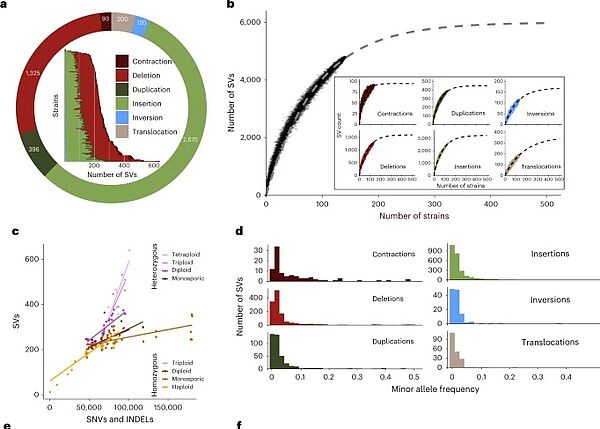Telomere-to-telomere assemblies of 142 strains characterize the genome structural landscape in Saccharomyces cerevisiae.
Samuel O’Donnell, Jia-Xing Yue, Omar Abou Saada, Nicolas Agier, Claudia Caradec, Thomas Cokelaer, Matteo De Chiara, Stéphane Delmas, Fabien Dutreux, Téo Fournier, Anne Friedrich, Etienne Kornobis, Jing Li, Zepu Miao, Lorenzo Tattini, Joseph Schacherer, Gianni Liti, Gilles Fischer.
Pangenomes provide access to an accurate representation of the genetic diversity of species, both in terms of sequence polymorphisms and structural variants (SVs). Here we generated the Saccharomyces cerevisiae Reference Assembly Panel (ScRAP) comprising reference-quality genomes for 142 strains representing the species’ phylogenetic and ecological diversity. The ScRAP includes phased haplotype assemblies for several heterozygous diploid and polyploid isolates. We identified circa (ca.) 4,800 nonredundant SVs that provide a broad view of the genomic diversity, including the dynamics of telomere length and transposable elements. We uncovered frequent cases of complex aneuploidies where large chromosomes underwent large deletions and translocations. We found that SVs can impact gene expression near the breakpoints and substantially contribute to gene repertoire evolution. We also discovered that horizontally acquired regions insert at chromosome ends and can generate new telomeres. Overall, the ScRAP demonstrates the benefit of a pangenome in understanding genome evolution at population scale.

